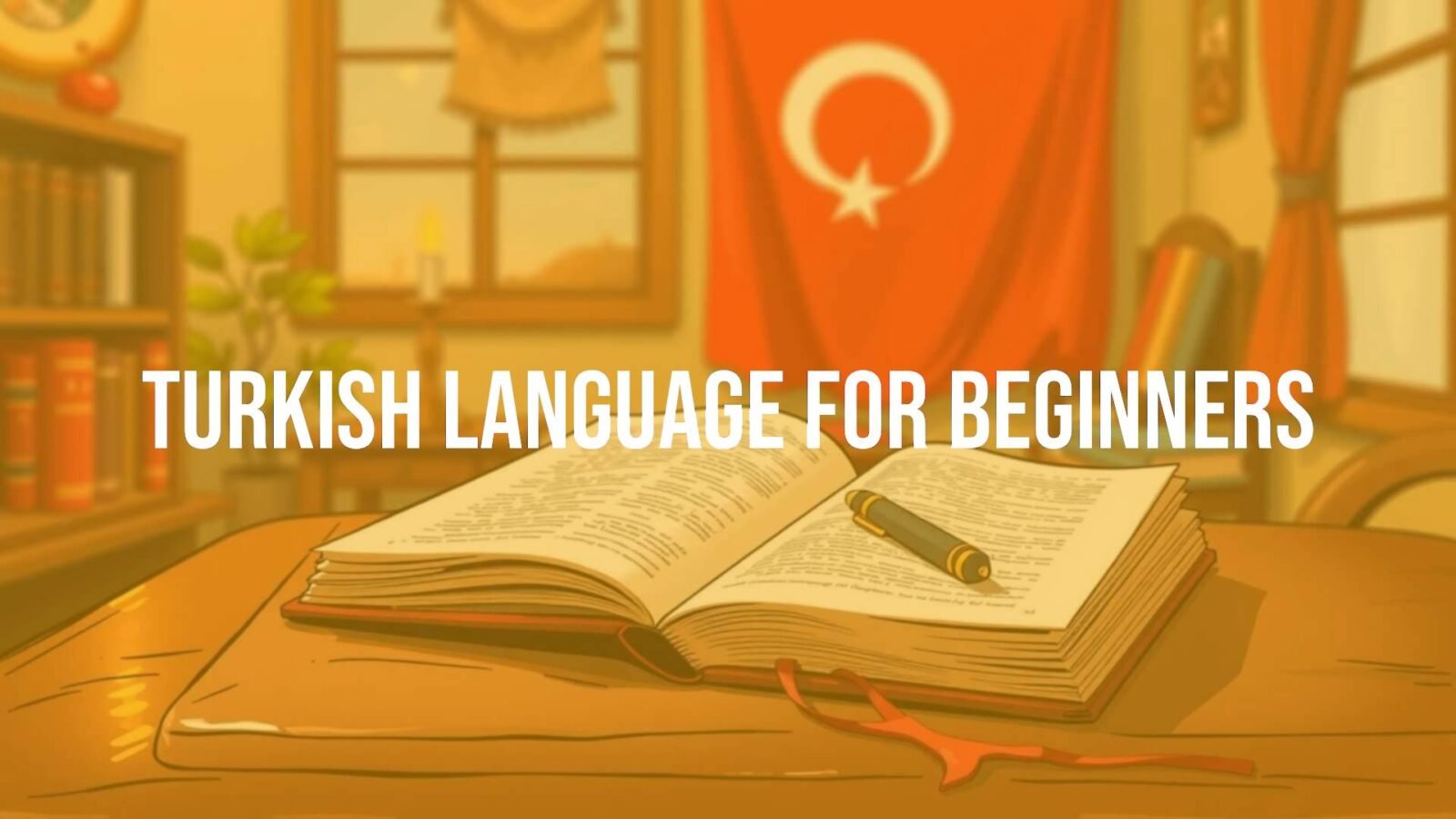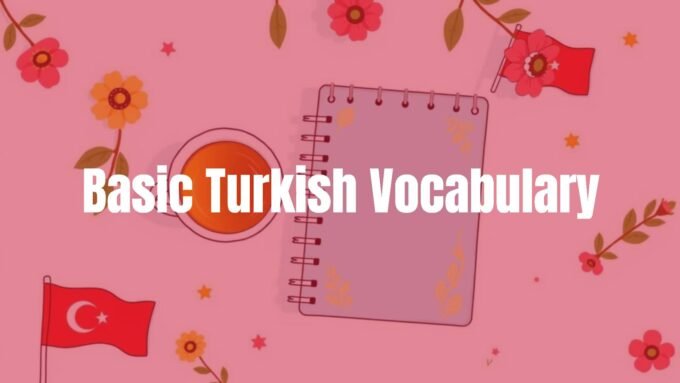Starting to learn Turkish as a beginner is exciting and rewarding. It opens the door to a lively culture and helps you connect with nearly 80 million people. Why pick Turkish? Besides the number of speakers, Turkish has clear patterns and steady rules. It works differently from English, but once you learn the basic ideas, it feels very logical and approachable.
Whether you want to see ancient sites, work with Turkish partners, or add a new language to your life, Turkish is a smart choice. From getting around the busy markets of Istanbul to building new professional relationships in a growing economy, even simple Turkish will make your trips and daily life richer.

Why learn the Turkish language as a beginner?
Benefits for travel, business, and culture
Learning Turkish adds real value and gives you practical benefits. For travel, even a few phrases go a long way in Türkiye. You can order in a café with confidence, ask for directions to historic places, or bargain in Istanbul’s colorful bazaars. People in Türkiye are known for their warm welcome, and trying to speak Turkish helps you connect with locals and create better memories.
For work, Turkish can give you a real advantage. Türkiye’s economy is growing, with strong areas like manufacturing, tourism, tech, and finance. Speaking Turkish can help you build partnerships and find new chances in this market. If your job involves trips to Türkiye or contact with Turkish speakers, using the local language makes airports, meetings, and deals easier and smoother. It shows respect and helps build trust.
Learning Turkish also opens a path to a rich culture. It is part of a long history and many dialects. Knowing Turkish lets you see how Anatolian, Ottoman, and Western influences meet in architecture, literature (including Nobel winner Orhan Pamuk), music, and food. The language lets you connect directly with the people and stories of this country.
Popularity and global reach of Turkish
Turkish may not be as widespread as English or Spanish, but it is still a major language, with about 80 million speakers. It is the official language of Türkiye and also used in Cyprus. There are large Turkish-speaking communities in Germany, Bulgaria, Macedonia, and other countries. This means Turkish helps you both in Türkiye and in diaspora communities across Europe and beyond.
Many Turkish speakers also know other languages, which can help beginners. Still, people appreciate it when you try to use Turkish. As the most spoken Turkic language, Turkish can also help if you later want to learn other Turkic languages.
Turkish language basics for beginners
Unique features of Turkish grammar
Turkish grammar may look new at first, but it is very consistent and has few exceptions. Turkish uses SOV order (subject-object-verb). So “Mary eats an apple” becomes “Mary an apple eats” (Mary bir elma yiyor).
Turkish is also agglutinative. You build words by adding suffixes to a base. Each suffix adds meaning: plural, possession, tense, place, and more. For example, from “ev” (house), you can build many forms by stacking suffixes. This can feel hard at the start, but the system is clear and efficient once you get used to it. There are no grammatical genders and no articles (a, an, the), which makes things simpler than many European languages.

Common questions about Turkish for English speakers
English speakers quickly notice Turkish has no direct verb “to be.” Instead, Turkish adds suffixes to nouns or adjectives. “I am a teacher” is “Ben öğretmenim,” where “-im” means “I am.” Often you can drop the pronoun if the suffix already shows the subject.
Pronunciation is another common topic we will cover more soon. The good news: Turkish is phonetic. Letters usually match one sound, and words are pronounced as written. This steady system makes reading and speaking much easier than in English, even if a few sounds are new.
Getting started with the Turkish alphabet
Letters, sounds, and tips for correct pronunciation
Good news: Turkish uses a Latin-based alphabet. You won’t be dealing with a new script. There are 29 letters. Some special ones are ç, ğ, ş, ı, ö, and ü. The letters q, w, and x are not used.
Turkish spelling matches pronunciation closely. Each letter usually has one sound. Key sounds include:
- A like the “a” in “sun.”
- C like the “j” in “jar.”
- Ç like the “ch” in “chipper.”
- E like the “e” in “egg.”
- Ğ (yumuşak ge, “soft g”) follows a vowel. After a, ı, o, u it lengthens the vowel; after e, i, ö, ü it sounds like “y” in “yellow.” Often it has no sound by itself.
- I (undotted I) like the vowel in “the” (schwa-like).
- İ (dotted I) like “ee” in “see,” but shorter.
- Ö and Ü are like German ö and ü. Round your lips: ö is between “o” and “e,” ü is between “u” and “i.”
- Ş like “sh” in “shelf.”
Practice these special sounds often. Listen to native speakers, repeat after them, and focus on the small differences from English. Overdoing the sounds at first can help train your mouth and ear.
How Turkish pronunciation differs from English
Turkish is far more consistent than English. In English, a letter can sound many ways (“ough” in “though,” “through,” “rough,” “bough”). In Turkish, letters keep the same sound. Also, pairs like “sh” and “ch” are single letters (Ş and Ç) in Turkish.
Vowels differ a lot. Turkish has 8 vowels with clear, steady sounds. English vowels change more with context. Turkish also uses vowel harmony, which controls how vowels match inside a word.
Vowel harmony explained
Vowel harmony is a key feature of Turkish. Vowels in a word (and in its suffixes) match in type. Vowels are “front” (e, i, ö, ü) or “back” (a, ı, o, u), and also “rounded” (o, u, ö, ü) or “unrounded” (a, e, ı, i).
| Vowel group | Vowels | Notes |
|---|---|---|
| Front | e, i, ö, ü | Used with “-ler” and front-vowel suffix forms |
| Back | a, ı, o, u | Used with “-lar” and back-vowel suffix forms |
| Rounded | o, u, ö, ü | Rounds the lips; affects some suffix choices |
| Unrounded | a, e, ı, i | Neutral lip shape; affects some suffix choices |
Suffix vowels change to match the last vowel of the base word. For example, the plural is “-ler” or “-lar.” “Ev” (house) becomes “evler,” while “kitap” (book) becomes “kitaplar.” Learning vowel harmony helps both speaking and grammar, and makes Turkish feel very regular.
Essential Turkish phrases for beginners
Greetings and everyday expressions
Start with greetings. “Merhaba!” (Hello!) is polite and works almost anywhere. In the morning say “Günaydın!” (Good morning!), and in the evening “İyi akşamlar!” (Good evening!).
If someone says “Merhaba,” you can answer “Merhaba! Nasılsın?” (Hello! How are you?). If you feel good: “İyiyim. Sen nasılsın?” (I’m good. How are you?). If not: “Çok iyi değil” (Not very well). Be polite: “Lütfen” (Please) and “Teşekkür ederim” (Thank you). Reply to thanks with “Bir şey değil” or “Rica ederim” (You’re welcome). When parting, the person leaving says “Hoşçakal!” and the person staying says “Güle güle!”
Other useful words: “Evet” (Yes) and “Hayır” (No). You may also hear “Tabii!” (Of course!) or “Elbette!” (Certainly!) for yes, and “Yok!” (colloquial no). In a tough spot, try “İngilizce konuşur musunuz?” (Do you speak English?) or “Yardım edebilir misiniz?” (Can you help me?). If you’re lost: “Sizi anlamıyorum” (I don’t understand) or “Şunu tekrar edebilir misiniz?” (Could you repeat that?).
Travel and transportation phrases
Getting around a new country is easier with a few core phrases. “Nerede?” (Where is…?) is very helpful. “Afedersiniz, tuvaletler nerede?” (Excuse me, where are the toilets?). For shopping or checking prices, ask “Ne kadar?” or “Bu kaç para?” (How much is this?).
You may need a ride: “Taksi, lütfen!” (Taxi, please!), or to find the bus: “Otobüs durağı nerede?” (Where is the bus stop?). Learning numbers helps with prices, times, and directions.
Ordering food and dining vocabulary
Food is a big part of Turkish life. Some common items: “Ayran” (yogurt drink), “Çay” (tea), “Süt” (milk), “Bira” (beer), and “Kahve” (Turkish coffee). For coffee sweetness: “Sade” (no sugar), “Az şekerli” (a little sugar), “Orta şekerli” (medium), “Çok şekerli” (sweet). “Kahvaltı” is breakfast.

Other helpful words: “Hellim” (Halloumi), “Sucuk” (spicy beef sausage), and “Ekmek” (bread). Use “Lütfen, bir…” (Please, one…) plus the item. Don’t forget “Teşekkür ederim” when you get your order.
Work, study, and business basics
For work settings, start with “Şirket” (Company), “Ofis” (Office), “Departman” (Department), and “İş” (Work/Job/Business). You might also hear “Küçük ve orta ölçekli işletme” (SME) and “Uluslararası şirket” (International company).
Useful roles and actions: “Çalışmak” (to work), “Pozisyon” (position), “İşveren” (employer), “Çalışan” (employee), “Patron” (boss), “Müdür” (manager), “İş arkadaşı” (colleague). “Kariyer” is career and “Yönetim” is management. Using these words shows respect and helps you communicate clearly.
Building Turkish vocabulary and conversation skills
Most useful words to learn first
Don’t try to learn every word. Focus on common words and phrases. Start with greetings, simple questions (“How much?”, “Where is…?”), numbers, frequent verbs (to be, to go, to eat), and everyday nouns (water, food, house, person). Many apps list high-frequency Turkish words-great for beginners. Think of the 80/20 rule: the most useful 20% of words cover most daily needs.
Flashcards help a lot. Apps or paper cards both work. Learn words in context: instead of just “su” (water), learn “Bir su, lütfen” (One water, please). Context makes words stick.
Pronunciation practice techniques
Regular practice matters. Turkish is phonetic, so once you learn letter sounds, you’re set. Try these:
- Listen and repeat: Use apps, videos, or podcasts. Copy the sound, rhythm, and stress.
- Record yourself: Compare your speech to a native speaker to catch small differences.
- Minimal pairs: Practice close pairs like “kar” (snow) vs. “kâr” (profit) to train your ear.
- Sing along: Songs help you learn rhythm and new words in a fun way.
- Over-articulate: For new sounds, exaggerate at first to build the right mouth movements.
Forming basic sentences in Turkish
With some vocabulary, start building sentences. Keep SOV order in mind. “Ben elma yiyorum” (I apple eat) is a clear example. Learn present, past, and future forms of common verbs. Turkish verb forms are steady, and suffixes do most of the work.
Find the verb root, then add tense and person suffixes. “Gitmek” (to go) becomes “gidiyorum” (I am going). Don’t try to be perfect at first-focus on getting your message across. The more you practice, the more natural the order and suffixes will feel.
Turkish grammar rules every beginner should know
Word order and typical sentence structure
Turkish uses Subject-Object-Verb. The main verb comes at the end. “The girl threw the stick to the dog” becomes “Kız çubuk köpeğe attı” (The girl the stick to the dog threw). This feels unusual at first, but with steady practice it starts to feel normal.
Turkish allows some word order changes for emphasis, but as a beginner, stick with SOV to keep things clear.
How Turkish uses suffixes
Suffixes are a key part of Turkish. You attach them to a root to add meaning, similar to stacking blocks.
Suffixes can show:
- Plural: -ler / -lar (ev → evler)
- Possession: -im, -in, -i, -imiz, -iniz, -leri (evim → my house; evin → your house)
- Place/motion: -de/-da (at/in/on), -den/-dan (from), -e/-a (to) (evde, evden, eve)
- Verb tense/person: add to the verb stem (gidiyorum → I am going)
- Word building: change type or meaning (Türk → Turk; Türkçe → Turkish language)
Vowel harmony affects which vowel appears in a suffix. When you meet a long word, break it into root + suffixes to see how it is built.

Verbs and tenses for beginners
Verbs and tenses are a big part of making yourself understood. Focus on common verbs in present, past, and future. Turkish verb patterns are steady, and there are few surprises.
Take the verb stem and add the right tense and person endings, following vowel harmony. Learn the main patterns by heart and practice often. Also remember: instead of a separate “to be” verb, Turkish adds endings, as in “Ben öğretmenim” (I am a teacher).
Effective methods for learning Turkish as a beginner
Best self-study strategies and tools
Self-study works well if you set a plan and use good tools. Start with the alphabet and sounds. A textbook can guide you through grammar and sentence patterns, but don’t use only books.
Add active methods:
- Flashcards: Build vocabulary daily with an app or paper cards.
- Notebook: Write words, rules, and sample sentences by hand to help memory.
- Online resources: Use sites with practice, grammar tips, and culture notes.
- Speak out loud: Say new words and sentences to build confidence and better sound.
Short daily study is better than long, rare sessions. Even 20 minutes a day adds up.
Recommended language apps for Turkish
Apps make learning easier and fit into a busy day. Helpful options include:
- OptiLingo: Focuses on common phrases and spaced repetition to help you remember naturally.
- 50LANGUAGES: Offers “Turkish for beginners” with audio and simple lessons. Works offline on Android and iPhone.
- Duolingo: Popular for short, game-like lessons that keep you coming back.
- Preply: Connects you with native tutors for one-on-one lessons and real conversation practice.
Pick apps with real pronunciation, useful vocabulary, and memory tools like spaced repetition.
Practice routines to improve fast
Make Turkish part of your day. Sample routine:
- Morning (10-15 min): Review yesterday’s flashcards or an app lesson.
- Commute (15-20 min): Listen to a Turkish podcast or music to train your ear.
- Lunch (10-15 min): Do a short new lesson in your app or book.
- Evening (20-30 min): Write a few sentences, practice new words, or watch a Turkish show with subtitles.
Keep it steady. Short, regular practice beats long, rare sessions. Make Turkish part of daily life.
Immersive techniques for daily learning
Immersion speeds up learning by increasing contact with the language.
- Label your space: Put Turkish labels on items at home.
- Use media:
- Watch Turkish TV/films: Start with English subtitles, then Turkish subtitles, then try without. Series like “The Protector” or “Diriliş: Ertuğrul” are popular.
- Music and podcasts: They improve listening and help you feel vowel harmony. Read lyrics to learn new words.
- Read simple texts: Children’s books have short sentences and clear words. News sites like Hürriyet, Sabah, and Posta help later on.
- Think in Turkish: Describe your day in simple sentences.
- Find a partner: Speaking with a native gives real practice and feedback.

Try to weave Turkish into your routine so it feels natural and enjoyable.
Common challenges and tips for beginner Turkish learners
Avoiding common mistakes
Mistakes will happen and help you learn. Still, knowing common traps can help you move forward more smoothly:
- Skipping vowel harmony: This rule affects both sound and suffixes. Practice it from day one.
- Word-for-word translation: Turkish uses SOV order and suffixes, so direct English to Turkish often fails. Try to think in Turkish patterns.
- Mispronouncing special letters: Letters like ı, ğ, ö, ü, ç, and ş have their own sounds. Learn them well.
- Irregular study: Sporadic study slows progress. Short daily practice works better.
- Relying on English: Many people speak English, but try to use your Turkish. Locals respect the effort.
Treat mistakes as steps forward. The more you try, the faster you grow.
Staying motivated and making progress
Learning a language takes time. Keep your drive strong with these ideas:
- Set small goals: “10 words this week” or “a 5-minute chat next month.” Small wins build momentum.
- Notice your wins: Did you order food or follow a simple sentence? Celebrate it.
- Remember your reason: Travel, work, or culture-keep your purpose in mind.
- Make it fun: Watch dramas, listen to music, or cook Turkish dishes while playing Turkish radio.
- Mix methods: Use apps, books, videos, and speaking practice to keep it fresh.
- Join others: Online groups or local exchanges can motivate you and keep you on track.
Enjoy the process. Every day you learn something new about language and culture.
Finding language partners and tutors
Self-study helps, but real conversations build fluency faster. Find people to practice with:
- Language exchange: Use websites or apps to swap English for Turkish.
- Online tutors: Sites like Preply offer one-on-one lessons with native speakers for personal guidance and quicker progress.
- Local meetups: Look for Turkish cultural centers or language groups for face-to-face practice.
- Be confident: People in Türkiye are friendly and appreciate your effort. Try your Turkish with native speakers and ask for tips.
Regular chats with native speakers make you more confident, more fluent, and more natural.
Frequently asked questions about learning Turkish for beginners
How long does it take to learn basic Turkish?
It depends on your goals, habits, and past language study. The US Foreign Service Institute (FSI) places Turkish in Category IV for English speakers. They estimate about 44 weeks or 1100 hours for professional working proficiency.
For basic conversation, you can move faster. With daily practice of 20-30 minutes, you can learn key phrases, core grammar, and simple talk within a few months. The key is steady exposure and active practice. You will soon manage daily tasks and polite exchanges.
What are simple greetings in Turkish?
Common greetings include:
- Merhaba! – Hello!
- Günaydın! – Good morning!
- İyi günler! – Good day! / Have a good day!
- İyi akşamlar! – Good evening!
- İyi geceler! – Good night!
These are friendly, clear, and always welcome.
How do you reply to Merhaba?
Answer “Merhaba!” with “Merhaba!” If you want to continue the chat, add “Nasılsın?” (How are you?). A common exchange is:
Person 1: “Merhaba!”
Person 2: “Merhaba! Nasılsın?”
This is natural and polite.
How do you say yes and no in Turkish?
Use these:
- Evet! – Yes!
- Hayır! – No!
You may also hear “Tabii!” or “Elbette!” for yes, and “Yok!” (casual no). For beginners, “Evet” and “Hayır” are clear and safe in any setting.
How do you thank someone in Turkish?
The most common way is:
- Teşekkür ederim! – Thank you!
For extra thanks: “Çok teşekkür ederim!” (Thank you very much!). To reply:
- Bir şey değil. – You’re welcome.
- Rica ederim. – You’re welcome.
You will use these all the time in daily talk.
Next steps for beginners learning Turkish
Where to find more resources for Turkish language
After the basics, you have many options to keep learning:
- Language learning websites: Look for sites with detailed guides for sounds, grammar, and vocabulary.
- Online dictionaries and translators: Great for single words. Be careful with full sentences, as tools can miss Turkish grammar details.
- YouTube channels: Find teachers who share free lessons, tips, and culture videos. Vlogs by Turkish speakers are great for real listening practice.
- Turkish media: Read news (Hürriyet, Sabah, Posta), listen to radio, and watch films or series to grow your vocabulary.
- Libraries and bookstores: Get textbooks, phrasebooks, and easy readers. Children’s books are perfect early reading.
- Cultural centers: If available, join classes, workshops, and events to meet native speakers.
Using different types of resources keeps you engaged and builds all skills at the same time.
How to advance to intermediate learning
Moving from beginner to intermediate means using more complex language and speaking more freely. Try this plan:
- Learn more grammar: Go beyond basic tenses. Practice clauses, linking words, and advanced suffix patterns. Get comfortable with Turkish cases (nominative, genitive, dative, accusative, ablative, locative).
- Grow vocabulary by topic: Learn words by theme-politics, environment, tech, health-so you can talk about more subjects.
- Have deeper talks: Express opinions, describe past events, and discuss future plans in detail.
- Read native content: Move to short stories, news articles, and blogs for native speakers to learn natural phrases.
- Watch with fewer supports: Use Turkish subtitles, then try no subtitles, to push your listening.
- Write often: Keep a journal, write short essays, and ask a tutor or native speaker for feedback.
- Spend time in Türkiye if you can: Daily use will speed up your progress more than anything else.
Keep building step by step, challenge yourself, and use Turkish in real life as often as you can.















Leave a comment